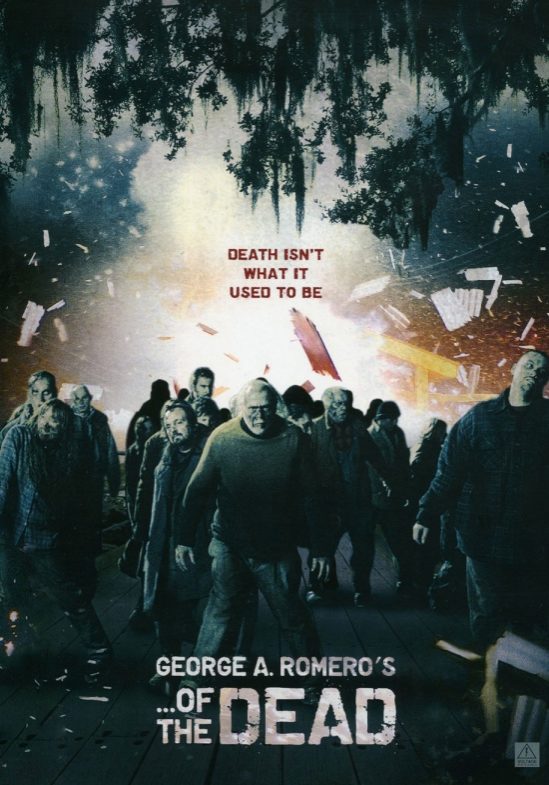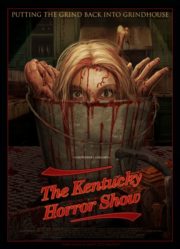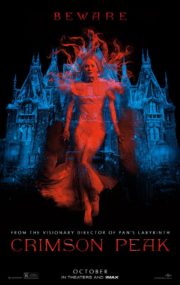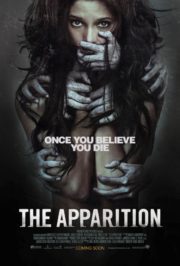When the Dead Walk, Who Shall Stand?
“In an island of the living and the dead, we’re the ones who are haunted.” This line from George A. Romero’s Survival of the Dead (2009) encapsulates the essence of this zombie horror flick. Romero, who is often hailed as the godfather of the zombie genre, brings forth yet another chapter in his undead saga. This installment takes viewers to the fictional Plum Island, where two feuding families, the O’Flynns and the Muldoons, contend with the rise of the walking dead while clinging stubbornly to their old disputes. The film delves into the all-too-human themes of survival, tradition, and the refusal to change, set against the backdrop of a society falling to pieces.
Whispers and Shadows: Crafting the Creepy Ambiance
Atmospheric Tension and Visual Haunts
Survival of the Dead’s horror atmosphere leans heavily into suspense and the sense of inevitable doom. Romero, as with his previous works, doesn’t rely on jump-scares. Instead, the film maintains a consistent foreboding tone, portraying an island that feels cut off from any hope or sanity. The signature Romero tension is ever-present as the characters navigate the moral ambiguities of their predicament.
A Haunting Palette: The Role of Cinematography
The cinematography in Survival of the Dead reflects a world tinged with the gray of moral decay. The muted color palette and use of shadows play into the bleakness of the island’s situation. Camera work meanders between steady, sobering shots of the environment and the chaos of sudden undead outbursts, creating a contrast between the living’s desolation and the dead’s unpredictable vigor. Special effects, a staple in zombie films, serve their gruesome purpose without overshadowing the narrative—strike a balance that maintains the realism within the horror genre.
The Silence Before the Scream: Soundtrack and Effects
Sound plays a pivotal role in bolstering the film’s eerie qualities. The minimalist soundtrack often takes a backseat to ambient sounds—wind howling, leaves rustling, the sickening sounds of zombie feasting—heightening the isolation and terror. The well-timed usage of silence amplifies the suspense, making the eventual outbreak of noise and chaos all the more jarring.
The Human Heart in the Land of the Undead
Characterization and Conviction Amidst Chaos
In terms of performances, the cast of Survival of the Dead delivers mixed results. Some characters come across as caricatures, exaggerated to fit horror archetypes rather than as real people facing an apocalypse. However, others manage to evoke empathy, striking a chord with the forsaken humanity at the core of this living-dead drama. The actors’ portrayals of individuals veering on the edge of sanity in an insane world add the necessary depth to a film that could easily slip into the monotony of zombie tropes.
The Living, The Dead, and The Moral Grey
Societal Decay and the Horror Trope Toolbox
Romero’s Survival of the Dead stands out for its focus on human conflict amidst horror, rather than on the horror itself. This averts the expectations of a genre saturated with mindless gorefests. The film dips its toes into various horror subgenres—from body horror to psychological terror—but does so with a light touch, emphasizing the human drama over the shock value.
The primary methods of fear induction are psychological. Scenes are crafted to cause discomfort by their implications more than by the gore they depict. The conflict between the living represents the core horror, an allusion to how humans can become as monstrous as the creatures they fear.
Deeper Echoes of Dread: Themes and Commentary
Themes of tradition, conflict, and change are explored in parallel to the zombie narrative, offering a commentary on society’s resistance to change even in the face of total annihilation. In this aspect, Survival of the Dead uses the zombie apocalypse as a metaphor, adding layers of depth to what could be dismissed as another iteration of an overdone motif.
Survival Reassessed: The Verdict
For avid fans of George A. Romero and his unique take on the zombie apocalypse, Survival of the Dead will satisfy with its exploration of human stories wrapped in a horror package. It’s not the most frightening of Romero’s works, and some might argue it lacks the innovation of his earlier films, but it remains thought-provoking, drawing its horror from existential dread rather than explicit content. Casual viewers might find the pacing slow compared to more action-driven zombie movies, but those looking for depth amidst decay will appreciate the film’s thematic richness.
Viewers with a penchant for underappreciated genre entries may find the movie rewarding, while those with an aversion to slower character-driven narratives might seek their scares elsewhere. As for comparisons, Survival of the Dead might not stand shoulder to shoulder with classics like Night of the Living Dead or the more recent twist on the genre like 28 Days Later, but it does add a unique color to Romero’s undead palette.
In conclusion, Survival of the Dead is a peculiar beast of a horror film. Its strengths lie in its atmosphere and layered subtext, while its weaknesses teeter towards inconsistent character development and a familiar feeling plot. For those who can appreciate the film’s broader messages and its place in the legacy of a horror mastermind, it’s worth a watch.
Content Warning: The film features typical zombie violence and gore, which might not be suitable for all audiences.




